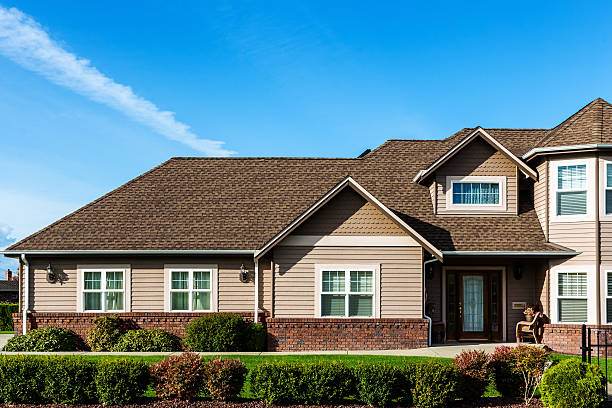Torch-down roofing has gained attention for its durability and waterproof qualities, but it carries risks that often outweigh its benefits. The installation process requires extreme caution, and mistakes can lead to costly repairs or safety hazards. Understanding the downsides of this roofing option can help property owners make informed decisions before committing to it.
Fire Hazards and Safety Concerns
Torch-down roofing involves using an open flame to melt the bitumen and adhere it to the roof surface. This process increases the risk of accidental fires if precautions are not strictly followed. Fire hazards are a major concern for both residential and commercial buildings, making safety protocols critical during installation.
The heat required to apply such a roofing structure can damage underlying materials if not carefully managed. Even small errors may result in scorching or weakening of the roof deck, leading to premature deterioration. Safety equipment and professional oversight are often necessary to minimize these risks and protect workers on-site.
Another risk is that surrounding areas, including nearby structures or vegetation, may be affected by stray sparks or molten material. This makes torch-down applications less suitable for densely populated areas. Choosing an alternative roofing method can reduce these potential hazards while still maintaining durability.
Installation Complexity and Skill Requirements
Torch-down roofing demands precise skill and experience for a proper installation. The surface of the modified bitumen roofing must be thoroughly prepared, and the torching process must be executed evenly to prevent bubbling or uneven adhesion. If you take a look at its structure, it becomes clear that the layering technique and torch application require a steady hand and attention to detail.
Even minor errors can result in leaks or the need for costly repairs down the line. Careful planning and consistent technique are important to avoid future issues. Mistakes during installation can compromise the roof’s waterproofing capabilities.
Time-consuming steps, such as rolling and overlapping the sheets correctly, add to the complexity. Beginners or inexperienced installers may struggle to achieve a reliable bond across the entire surface, increasing the likelihood of long-term damage. This makes the method less practical for DIY projects or hurried renovations.
High Installation Costs
The cost of installing torch-down roofing is often higher than alternative methods. Materials like modified bitumen sheets are pricier, and the specialized equipment required for safe installation adds to expenses.
Labor costs are another consideration, as only skilled professionals should handle torch-down applications. Hiring experienced workers increases the total investment, which may discourage property owners seeking budget-friendly options.
Unexpected expenses can arise if errors occur during installation. Repairing mistakes or replacing damaged sections can be costly, making the initial investment significantly higher than initially anticipated.
Limited Lifespan in Harsh Climates
Torch-down roofing performs best in moderate climates and may struggle under extreme weather conditions. Excessive heat can cause the bitumen to soften, while freezing temperatures may create cracks or brittleness.
Repeated exposure to harsh sun or heavy rainfall accelerates wear, reducing the roof’s effectiveness in protecting the building. This makes it less reliable in regions with extreme seasonal changes or intense weather events.
Owners of torch-down roofs may need frequent maintenance to address small issues before they escalate. The need for ongoing upkeep can diminish the perceived durability that initially attracted them to this roofing option.
Maintenance Challenges and Repairs
Repairs to torch-down roofing are often more complicated than for other materials. Locating leaks requires careful inspection, and patching mistakes can worsen the problem. Small tears or punctures may require cutting and replacing entire sections of the roof, rather than simple fixes.
Routine maintenance, such as cleaning debris and checking seams, must be performed regularly to prevent deterioration. Neglecting these tasks can lead to premature failure and water damage inside the building.
The repair process is time-intensive, with work sometimes taking several days to complete. This makes the roof less convenient for property owners looking for low-maintenance options.
Environmental Concerns
Torch-down roofing involves bitumen, a petroleum-based material, which raises environmental considerations. Production and disposal of these materials contribute to carbon emissions and landfill waste.
During installation, fumes and smoke may be released into the surrounding air, affecting local air quality. These emissions are a concern for installers and nearby residents, particularly in densely populated areas.
Recycling or disposing of old torch-down materials can be complicated. Finding proper facilities that handle this type of roofing safely adds another layer of responsibility for property owners.
Potential for Roof Damage
The heat and weight involved in torch-down roofing can inadvertently damage the roof deck or underlying structure. The added stress may weaken support elements and compromise the integrity of the roof.
Improper handling or accidental overheating during installation can create bubbles, blisters, or cracks. These defects allow water infiltration and increase the likelihood of leaks, leading to more extensive repairs.
Even slight imperfections in the installation can have cascading effects, requiring ongoing monitoring to prevent costly structural issues. Property owners must weigh these risks against the benefits before choosing this roofing method.
Noise and Discomfort During Installation
Torch-down roofing generates significant noise and odors while being installed. The combination of heating equipment and torching creates disturbances that may affect residents or employees in nearby spaces.
The smell of heated bitumen can be unpleasant and linger for hours after work is completed. This can disrupt daily activities and create discomfort for those in close proximity.
Scheduling installation around building occupancy or business hours may be necessary to minimize disruption. This adds logistical challenges that may not be present with alternative roofing materials.
While torch-down roofing offers durability and waterproofing benefits, the associated risks make it less appealing for many property owners. Fire hazards, complex installation requirements, high costs, and ongoing maintenance challenges all contribute to its drawbacks. Environmental concerns, potential roof damage, and installation discomfort complicate the decision. Evaluating these factors carefully can help ensure the chosen roofing method aligns with long-term safety, budget, and convenience goals.
Published by HOLR Magazine.




